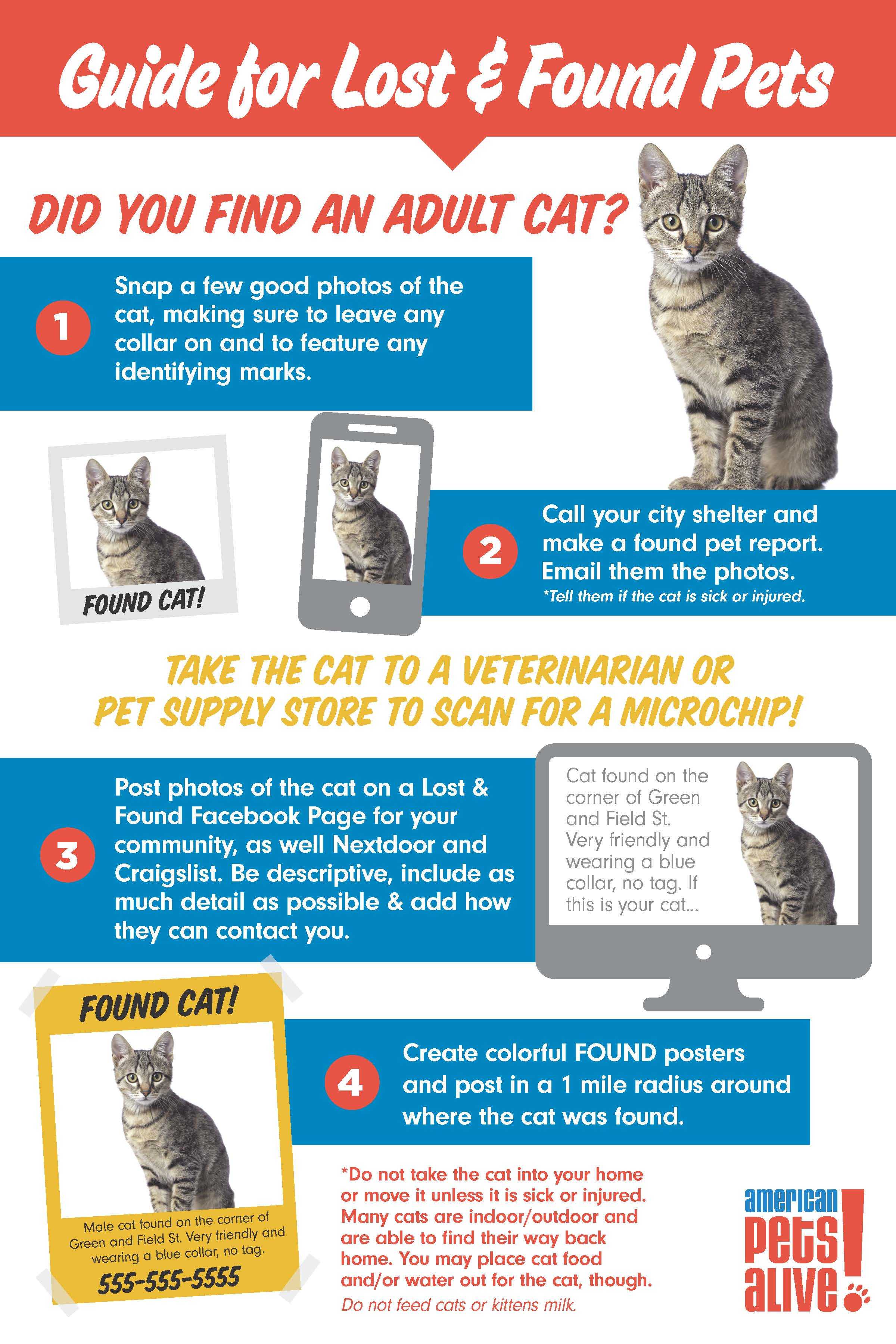Even when the city shelter is open, it shouldn't be the first place you take a found animal. City shelters are designed to be a safety net for sick or injured stray animals with no other option. If you found a healthy dog, a friendly cat or a litter of kittens, what should you do?
We know it can be difficult to resist bringing them to the shelter, but most community cats are perfectly fine and are being cared for by one or even multiple people in the neighborhood. You can provide food and water, and watch for any illness or injury to occur, but if the cat currently looks healthy we strongly recommend you leave it alone.
Leave any collar or identification on the cat for its picture.
If the cat is seriously injured, your local animal control may come get it, but if you are able to take a sick or injured cat to the vet yourself, that’s even better. Be sure to create the found report regardless. During this time, we need to reserve city shelter space for homeless animals coming from COVID-19 positive homes, so we need to resist bringing healthy community cats in. Send this picture to the animal shelter so they can include it with your found animal report.
Take the cat to your nearest vet clinic (be sure to call ahead) or pet supply store to check for a microchip. If the pet is microchipped, talk with the vet about getting the information of the individual associated with the microchip.
Provide as much detail as possible, any special quirks about the animal, collar color, etc. Post a picture showing exactly how the cat looked when you found it.
The poster should be large enough to see driving by with a big picture and simple description words (color, unique identifiers, etc. not breed or age guessing.)
Many cats are indoor/outdoor and are able to find their way back home. You may place cat food and/or water out for the cat, though. (Do not feed cats milk.)
